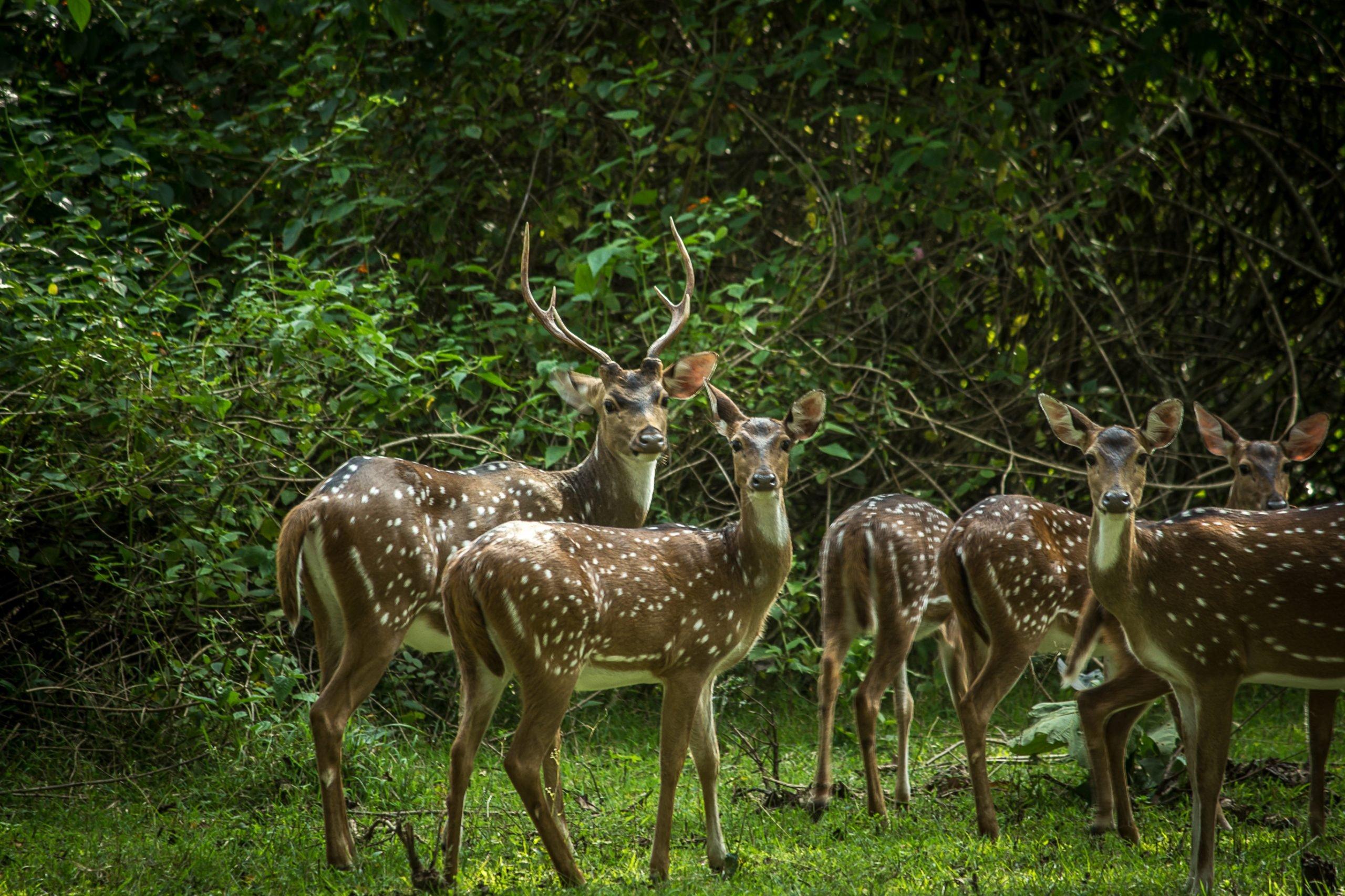On March 11, the Wildlife Institute of India (WII), Dehradun, released the biodiversity report of the flora and fauna of the Indian Institute of Technology Roorkee campus. The first such documentation of the 175-year-old campus, the study noted 304 species of 237 genera and 87 different plant families in the 365-acre campus. Most of the noted plants are flowering or angiosperms (291 species), followed by gymnosperms, i.e., cone-bearing plants (nine species) and pteridophytes, which include ferns and their related families (four species).
The IIT Roorkee-sponsored, a five-month-long floristic survey led to the discovery of Typhoniuminopinatum, a herbaceous plant of the family Araceae (Arum) – recorded for the first time in Uttarakhand.
In a similar report related to biodiversity on campus, on March 18, 2022, anthrax was detected in a deer carcass found on the campus of IIT Madras. The carcass was one of the four deer found dead on the campus recently. In response to the discovery, the institute has appointed a team to observe the wildlife for symptoms of the disease that can spread to humans, but its staff in proximity with the carcass on a course of antibiotics for the next 10 days, and work together with wildlife and animal husbandry authorities and Chennai Corporation on the protocols for the disease, among other steps.
The 630-acre IIT Madras, carved out of the Guindy National Park, acknowledges its responsibility in protecting the endangered blackbuck (Antilope cervicapra) and other animals in their original and native habitat.
Lungs of the Region
Another institute from Tamil Nadu, the Agricultural College and Research Institute in Madurai, a college of Tamil Nadu Agricultural University, is trying to revive its oxygen and biofuel park by increasing its green cover. In a report of March 14, the university shared its plan of planting 1,000 trees on five acres with the help of students and stakeholders in the next 10 days.
In June 2021, Bangalore University’s Biodiversity Park received the scientific accreditation of being a unique ecosystem in the city. The bio-park is considered a significant oxygen bank, with the value of net oxygen produced by more than six lakh trees on the Jnana Bharathi campus estimated to be at ₹16,725 crore.
Another plantation programme was launched by the Maharashtra University of Health Sciences (MUHS) in Nashik recently. Its Vice-Chancellor Lt. Gen. Madhuri Kanitkar (Retd.) in an interview shared that the initiative would drive more visitors to the campus, “just like the campuses of Harvard and Oxford universities, which are visited for their beautiful campuses,” she said in an interview.
Led by People Power
Blessed with vast, lush campuses, sometimes running in acres, universities in India are putting efforts into maintaining ecological balance, becoming the lungs of the regions, taking care of the animals visiting their campuses, controlling cases of human-animal conflicts, among other initiatives. While most of their green programmes are funded by governments, the prime reason for their success is the people on the campus.
Recently, the students at the Indian Institute of Science, in an RTI, questioned the idea of setting up a post-graduate medical school and an 800-bed multi-speciality hospital on the campus. The students were concerned about the fast-depleting green cover on the campus.
A century-old institute, the Indian Institute of Science is a diverse green patch spread over 400 acres, known for its natural beauty and rich biodiversity. The campus is home to 140 species of birds, 112 species of trees belonging to 32 families, and a range of wildlife.
This presence of nature, power of education and spirit of youth at one location has encouraged many educators to ask for more such campuses. In an interview, Timothy Gonsalves, the founder and former director of IIT Mandi, recalled how his first visit to the “breathtaking view of the rugged and remote” Uhl valley in 2010 inspired him to create a world-class institute “without destroying the pristine setting.”
Sustainable Campuses
Today, the students, faculty members and staff of many institutes, with the help of professionals, are proactively working to promote human-animal coexistence in these campuses. From designated onsite biodiversity-rich areas with formal conservation plans, such as IIT-Mandi, to green patches within concrete spaces, like Indian Institute of Science, and those situated next to a protected area, such as IIT Bombay, or a water body, like Patna University (next to river Ganga and making an apt place for the National Dolphin Research Centre), many of these centres of learning are doubling as active laboratories of sustainability research.
“Green campuses are the need of the hour, as we face growing climate and environmental challenges. Larger institutions have the potential to positively contribute to the climate change movement through both practical changes and the education they provide,” wrote DP Singh, a naturalist and former chairman of, the University Grants Commission in a newspaper column. He urged each university to prepare a Sustainable Campus Policy to be implemented by a Campus Sustainability Office.
“Many Indian universities with their large campuses and unique geographic locations may become conservatories of local biodiversity by little efforts,” he added.
Such conservation efforts are important for India, as the country is losing its biodiversity fast, with the country already losing over 90 percent of the area under the biodiversity hotspots. The Centre for Science and Environment (CSE) report released last year found the Indo-Burma hotspot to be the worst affected with a loss of 95 percent of the vegetation area.
Right in this biodiversity-rich Indo-Burma hotspot is Assam’s Digboi College, which shares its boundary with the Upper Dihing Elephant Reserve and is near to Dihing Patkai National Park and Soraipung range under Digboi Forest Division. Blessed with 19 species of mammals, 180 species of birds, 33 species of snakes, 12 species of lizards, 167 species of butterflies, seven species of frogs, more than 300 species of moths and several other species of insects and spiders, the college campus also has students actively participating in campaigns and movements to protest illegal coal mining in the reserve.
The National Service Scheme (NSS) unit of the college has also adopted the Soraipung forest village, where more than 80 families stay. The NSS has trained the villagers in solid waste management and some local youth to become bird guides.


























